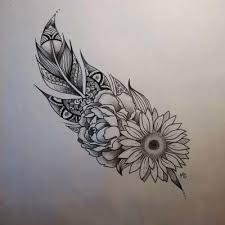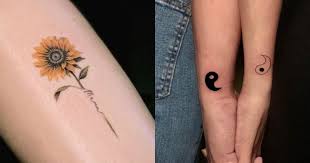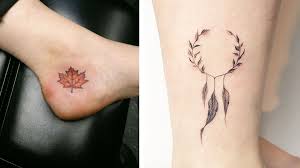Types of Tattoo Styles

A tattoo is a form of body modification made by inserting ink, dyes, and/or pigments, either indelible or temporary,
into the dermis layer of the skin to form a design. The art of making tattoos is known as tattooing.
Tattoos fall into three broad categories: purely decorative (with no specific meaning), symbolic (with a specific
meaning pertinent to the wearer), and pictorial (a depiction of a specific person or item). In addition, tattoos can
be used for identification such as ear tattoos on
If you’re thinking of getting your first tattoo, you probably have a lot of questions. Here are some of the most
commonly asked questions about getting a tattoo, and be sure to check out photos of the tattoo process.
Types
The American Academy of Dermatology distinguishes five types of tattoos:[10]
traumatic tattoos, also called
“natural tattoos”, that result from injuries, especially asphalt from road injuries or pencil lead; amateur tattoos;
professional tattoos, both via traditional methods and modern tattoo machines; cosmetic tattoos, also known as
“permanent makeup”; and medical tattoos.

Traumatic tattoos
A traumatic tattoo occurs when a substance such as asphalt or gunpowder is rubbed into a wound as the result
of some kind of accident or trauma. Coal miners could develop characteristic tattoos owing to coal dust getting
into wounds. These are particularly difficult to remove as they tend to be spread across several layers of skin,
and scarring or permanent discoloration is almost unavoidable depending on the location. An amalgam tattoo is
when amalgam particles are implanted into the soft tissues of the mouth, usually the gums, during dental filling
placement or removal. Another example of such accidental tattoos is the result of a deliberate or accidental
stabbing with a pencil or pen, leaving graphite or ink beneath the skin.
Subcultural connotations
Tattooing among women of the Koita people of Papua New Guinea traditionally began at age five and was
added to each year, with the V-shaped tattoo on the chest indicating that she had reached marriageable age.
Photo taken in 1912.
Many tattoos serve as rites of passage, marks of status and rank, symbols of religious and spiritual devotion,
decorations for bravery, sexual lures and marks of fertility, pledges of love, amulets and talismans, protection,
and as punishment, like the marks of outcasts, slaves and convicts. The symbolism and impact of tattoos varies
in different places and cultures. Tattoos may show how a person feels about a relative (commonly mother/father
or daughter/son) or about an unrelated person.[14] Today, people choose to be tattooed for artistic, cosmetic,
sentimental/memorial, religious, and spiritual reasons, and to symbolize their belonging to or identification with
particular groups, including criminal gangs (see criminal tattoos) or a particular ethnic group or law-abiding
subculture. Popular texts include the Biblical verses John 3:16, Philippians 4:13, and Psalm 23.[
Next to English, Latin is the most commonly used tattoo language in the Anglophone world.
Extensive decorative tattooing is common among members of traditional freak shows and by performance artists
who follow in their tradition.

Identification
People throughout history have also been forcibly tattooed for means
of identification.
A well-known example is the Nazi practice of forcibly tattooing
concentration camp inmates with identification numbers during the
Holocaust as part of the Nazis’ identification system, beginning in fall
- The SS introduced the practice at Auschwitz concentration
camp in order to identify the bodies of registered prisoners in the
concentration camps. During registration, guards would pierce the
outlines of the serial-number digits onto the prisoners’ arms. Of the Nazi concentration camps, only Auschwitz put
tattoos on inmates.[The tattoo was the prisoner’s camp number, sometimes with a special symbol added: some
Jews had a triangle, and Romani had the letter “Z” (from German Zigeuner for “Gypsy”). In May 1944, Jewish
men received the letters “A” or “B” to indicate a particular series of numbers.
Tattoos have also been used for identification in other ways. As early as the Zhou, Chinese authorities would
employ facial tattoos as a punishment for certain crimes or to mark prisoners or slaves. During the Roman
Empire, gladiators and slaves were tattooed: exported slaves were tattooed with the words “tax paid”, and it was
a common practice to tattoo “fugitive” (denoted by the letters “FUG”) on the foreheads of runaway slaves. Owing
to the Biblical strictures against the practice,Emperor Constantine I banned tattooing the face around AD 330,
and the Second Council of Nicaea banned all body markings as a pagan practice in AD 787.
In the period of early contact between the Māori and Europeans, the Māori people hunted and decapitated each
other for their moko tattoos, which they traded for European items including axes and firearms. Moko tattoos
were facial designs worn to indicate lineage, social position, and status within the tribe. The tattoo art was a
sacred marker of identity among the Māori and also referred to as a vehicle for storing one’s tapu, or spiritual
being, in the afterlife.
Tattoos are sometimes used by forensic pathologists to help them identify burned,
putrefied, or mutilated bodies. As tattoo pigment lies encapsulated deep in the
skin, tattoos are not easily destroyed even
when the skin is burned.
Tattoos are also placed on animals, though
rarely for decorative reasons. Pets, show
animals, thoroughbred horses, and livestock
are sometimes tattooed with identification
and other marks. Tattooing with a ‘slap mark’
on the shoulder or on the ear is the standard
identification method in commercial pig
farming.

Branding is used for similar reasons and is often performed without
anesthesia, but is different from tattooing as no ink or dye is inserted during
the process, the mark instead being caused by permanent scarring of the
skin. Pet dogs and cats are sometimes tattooed with a serial number (usually in the ear, or on the inner thigh) via
which their owners can be identified. However, the use of a microchip has become an increasingly popular choice
and since 2016 is a legal requirement for all 8.5 million pet dogs in the UK.
Tattooed lip makeup
Cosmetic
Main article: Permanent makeup
Permanent makeup is the use of tattoos to enhance eyebrows, lips (liner and/or lipstick), eyes (liner), and even
moles, usually with natural colors, as the designs are intended to resemble makeup.
A growing trend in the US and UK is to place artistic tattoos over the surgical scars of a mastectomy. “More
women are choosing not to reconstruct after a mastectomy and tattoo over the scar tissue instead… The
mastectomy tattoo will become just another option for post cancer patients and a truly personal way of regaining
control over post cancer bodies…However, the tattooing of nipples on reconstructed breasts remains in high
demand.
Functional
Functional tattoos are used primarily for a purpose other than
aesthetics. One such use is to tattoo Alzheimer patients with their
names, so they may be easily identified if they go missing.
Medical
Medical tattoos are used to ensure instruments are properly located for
repeated application of radiotherapy and for the areola in some forms of
breast reconstruction. Tattooing has also been used to convey medical
information about the wearer (e.g., blood group, medical condition, etc.).
Additionally, tattoos are used in skin tones to cover a skin pigmentation
disorder.
SS blood group tattoos (German: Blutgruppentätowierung) were worn by members of the Waffen-SS in Nazi
Germany during World War II to identify the individual’s blood type. After the war, the tattoo was taken to be
prima facie, if not perfect, evidence of being part of the Waffen-SS, leading to potential arrest and prosecution.
This led a number of ex-Waffen-SS to shoot themselves through the arm with a gun, removing the tattoo and
leaving scars like the ones resulting from pox inoculation, making the removal less obvious.
Tattoos were probably also used in ancient medicine as part of the treatment of the patient. In 1898, Daniel
Fouquet, a medical doctor, wrote an article on “medical tattooing” practices in Ancient Egypt, in which he
describes the tattooed markings on the female mummies found at the Deir el-Bahari site. He speculated that the
tattoos and other scarifications observed on the bodies may have served a medicinal or therapeutic purpose:
“The examination of these scars, some white, others blue, leaves in no doubt that they are not, in essence,
ornament, but an established treatment for a condition of the pelvis, very probably chronic pelvic peritonitis.





